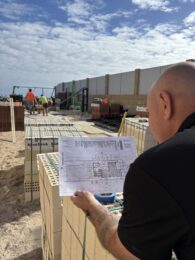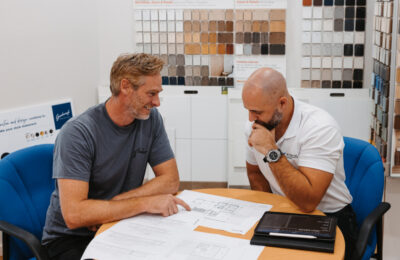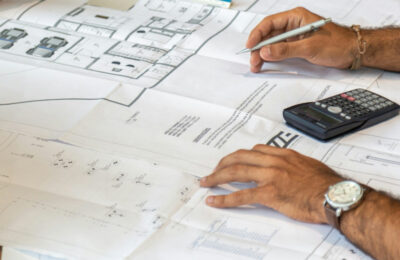What If My Dream Home Is Built With Shortcuts I Can’t See?
You’ve picked the design. Chosen the finishes. Pictured the day you finally get the keys.
But here’s the fear that sneaks in — sometimes quietly, sometimes with a pit in your stomach:
“What if they cut corners I can’t see? What if it looks fine now… but falls apart later?”
This is one of the most painful fears we hear — because by the time you know there’s a problem, it’s usually too late to fix it without serious cost, disruption, or regret.
Let’s look at what really happens when quality is compromised behind the scenes — and how to protect yourself from building a home that feels great at handover… but doesn’t hold up over time.
Quality Isn’t Just About How It Looks — It’s About How It Holds Up
A home can look beautiful on the surface — and still be built on shortcuts.
We’ve met families who moved into what they thought was their dream home, only to face issues within months:
- Doors that jam or don’t close properly
- Cracks in ceilings and walls
- Lifting tiles and bubbling floors
- Joinery that peels or warps
- Water damage from failed waterproofing
And that’s just the visible stuff.
The real nightmare? The things you can’t see — until the cost lands on your doorstep.
Poor slab prep. Inadequate flashing. Dodgy roof tie-downs. Cheap, substituted materials. Rushed framing. Bad site drainage. The kind of shortcuts that quietly undermine your home’s longevity — and your peace of mind.
Because once the build is complete, ripping things out to fix them is invasive, expensive, and sometimes impossible.
Why Do These Shortcuts Happen?
You’d think every builder would prioritise quality. After all, it’s your forever home — not a temporary fix.
But the industry doesn’t always reward craftsmanship. In fact, it often incentivises speed and scale over care.
Here’s why shortcuts happen more than you think:
- Supervisors are overloaded. When one person is stretched across too many jobs, they don’t have time to catch quality issues — until it’s too late.
- Trades are pressured to move fast. When timelines are tight and communication is thin, things get missed or rushed. Mistakes are covered, not corrected.
- Cost-cutting happens mid-build. Some builders swap materials or methods to protect their margins — but don’t always tell the client.
- Inspections aren’t thorough. Not all quality checks are created equal. If they’re rushed or poorly documented, small issues snowball into big ones.
It’s not just about bad builders. It’s about an industry culture that, unless actively challenged, lets this happen as standard.
What Does Real Build Quality Look Like?
True quality isn’t flashy. It’s not about having the most expensive taps or the trendiest kitchen.
It’s about how the house holds together — and how long it lasts without needing constant repair.
Here’s what to look for in a builder who takes quality seriously:
- They document everything. From slab to fit-off, there are clear checklists, inspections, and photo logs at every stage.
- They don’t outsource responsibility. Supervisors are present, accountable, and willing to explain what’s being done — and why.
- They prioritise site cleanliness and access. A tidy site isn’t just aesthetic — it reflects care and discipline in how the job is run.
- They never hide behind “industry standard.” If you raise a concern, they don’t dismiss it — they investigate it.
- They show their work. Great builders don’t just point to the finish. They walk you through what’s behind the walls, under the floor, and above the ceiling.
Because once the slab’s down and the walls are up, you’re not just building a house — you’re betting on the builder’s standards when no one’s watching.
The Hidden Costs of Poor Quality
We’ve had clients come to us heartbroken — not just because things went wrong, but because their concerns weren’t taken seriously until it was too late.
One couple spent over $30,000 fixing a leaking ensuite due to botched waterproofing.
Another had to re-level parts of their home after poor slab compaction led to internal movement.
And in most cases, the worst part wasn’t the money.
It was the feeling that they’d trusted someone… and that trust was broken.
Final Thoughts: It’s Not Just a Home — It’s a Legacy
A well-built home doesn’t just give you peace of mind today — it protects your family for decades.
So if something doesn’t feel right during construction — ask.
If a variation pops up that doesn’t make sense — question it.
If you’re not sure what’s happening behind the scenes — demand clarity.
Because this isn’t just about build quality. It’s about your future quality of life.
Want to Know How to Spot a Builder Who Cuts Corners?
Inside our free guide, The Smart Home Blueprint, we walk you through the exact steps to identify — and avoid — quality risks before they happen.
You’ll learn:
- What questions reveal a builder’s real standards
- How to make sure your slab, structure, and waterproofing are actually done right
- What to look for during site visits (and what should never be ignored)
- How to protect your build with the right documentation and inspections
This guide is built from years of experience fixing what other builders missed — and helping families avoid it altogether.
👉 Click here to download your copy of The Smart Home Blueprint




